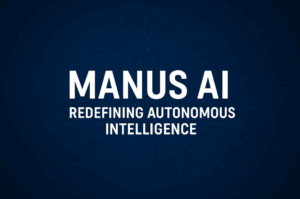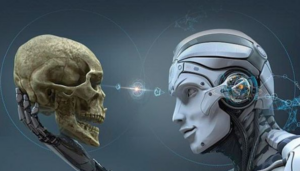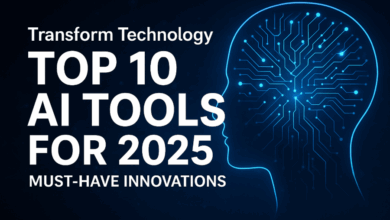Manus AI: Redefining Autonomous Intelligence
What is Manus AI? A Deep Dive into the World’s First Fully Autonomous Artificial Intelligence
Artificial intelligence is evolving faster than ever. In recent years, large language models such as ChatGPT, Google Gemini, and Elon Musk’s Grok have dominated the tech landscape. However, a groundbreaking innovation from China is now making waves worldwide. Manus AI, promoted as the world’s first fully autonomous AI agent, is not just another chatbot — it may mark the beginning of a new era in artificial intelligence.
In this article, we’ll explore what Manus AI is, who created it, its key features, how it differs from other AI models, and what the future may hold for autonomous AI systems.

What is Manus AI?
Manus AI is an autonomous AI agent developed by the Chinese company Butterfly Effect / Monica. Unlike traditional AI systems that rely heavily on human input, Manus can think, plan, and execute tasks independently.
With tools like ChatGPT or Gemini, you need to provide a prompt, instruction, or question, and the system responds accordingly. They are powerful, but fundamentally reactive.
Manus AI breaks this paradigm. It doesn’t simply wait for user commands — instead, it can set goals, divide them into smaller tasks, prioritize actions, and complete workflows on its own.
In other words, Manus AI is not just a text generator. It’s closer to a true digital worker capable of functioning without continuous human supervision.
Who Created Manus AI?
The project was launched by Butterfly Effect / Monica, a China-based AI startup. The developers set out to build an AI that goes beyond reactive chatbots and evolves into a proactive, decision-making agent.
China’s rapid rise in the field of artificial intelligence has been evident for years. Government-backed investment, combined with an ambitious private sector, has paved the way for competitive products that rival US-based models. Manus AI is the latest and perhaps boldest step in this race.

Key Features of Manus AI
What exactly makes Manus AI different from ChatGPT, Gemini, or Grok? Here are its most talked-about features:
- Fully Autonomous Functionality
- Works independently without step-by-step instructions.
- Can break down large tasks into smaller, manageable pieces.
- Completes projects end-to-end without ongoing user input.
- Tool Usage and Integrations
- Goes beyond text — it can interact with external tools, APIs, and systems.
- Capable of coding, web scraping, and automating workflows.
- Proactive Decision-Making
- Instead of waiting for prompts, Manus decides what actions are necessary.
- Acts like a project manager, mapping out strategies for task completion.
- GAIA Benchmark Results
- Scored impressively on the GAIA benchmark, a test that measures AI performance across multiple domains.
- Outperformed several existing AI models, according to developers.
- Cloud-Based Operation
- Can continue working in the cloud, even when the user logs out or shuts down their device.
- Multi-Task Management
- Handles several workflows simultaneously.
- Capable of managing complex projects with multiple dependencies.
Manus AI vs. ChatGPT, Gemini, and Grok
| Feature | ChatGPT | Google Gemini | Grok (xAI) | Manus AI |
| Requires user prompts | ✅ | ✅ | ✅ | ❌ |
| Autonomous decision-making | Limited | Limited | Limited | Advanced |
| Multi-task handling | Partial | Yes | Partial | Advanced |
| Cloud-based workflow | ❌ | ❌ | ❌ | Yes |
| Proactive behavior | ❌ | ❌ | ❌ | Yes |
This comparison shows why Manus AI is generating so much buzz — it doesn’t just respond, it acts.
Potential Use Cases of Manus AI
- Research and Data Analysis
- Collects, organizes, and summarizes information across the web.
- Business Operations
- Manages tasks such as email, project tracking, and workflow automation without constant human supervision.
- Software Development
- Writes, tests, and debugs code independently.
- Customer Service
- Moves beyond traditional chatbots by actively solving customer problems.
- Personal Assistance
- Organizes daily tasks, schedules, and priorities proactively.

Advantages of Manus AI
- Time Efficiency: Reduces hours of human work into minutes.
- Independence: Requires little to no user input once a goal is defined.
- Productivity: Capable of handling multiple tasks at once.
- Performance: Proven results in benchmarks such as GAIA.
Risks and Limitations
Of course, Manus AI isn’t without its concerns:
- Security Risks: An autonomous system making decisions without human oversight could be dangerous if misused.
- Data Privacy: Being China-based, questions about user data protection and regulatory compliance remain.
- Transparency: It’s unclear whether real-world performance matches the marketing hype.
- Limited Access: Currently available through invitation and waitlists only.
The Future of Manus AI
Manus AI may represent the first true step into autonomous AI systems. If it continues to deliver on its promises, it could change the way businesses, researchers, and individuals use artificial intelligence.
However, its adoption will depend heavily on trust, regulation, and global acceptance. The debate around ethics, control, and data security will shape its role in the coming years.
Conclusion
So, what is Manus AI? It is the world’s first fully autonomous AI agent, designed to operate independently and make decisions without human guidance. Unlike ChatGPT, Gemini, or Grok, it doesn’t just wait for instructions — it thinks, plans, and executes tasks on its own.
Built in China by Butterfly Effect / Monica, Manus AI combines potential with controversy. It offers unprecedented efficiency but also raises serious questions about control, privacy, and safety.
Whether it becomes the future of AI or just another short-lived experiment, Manus AI is undoubtedly a milestone in the journey toward autonomous artificial intelligence.




